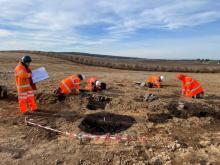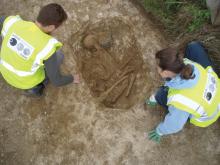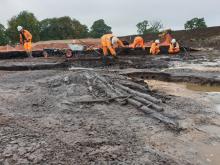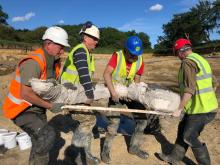
In spring 2022, staff at the quarry in south-east England came across a wooden shipwreck while excavating in the quarry lake for aggregate. In the year since its initial discovery, working for Kent County Council and funded by Historic England, the wreck has been investigated and recorded by archaeologists and discovered to be a rare example of a late 16th-century vessel.
The shipwreck project has been a multidisciplinary effort, with experts from a wide range of specialisms contributing to the investigation. Thanks to dendrochronology assessment coordinated by Historic England it is known the ship dates to the late 16th century and that the oak timbers are of English origin. But what of the ship’s construction?
Paolo Croce, marine archaeologist and specialist in assessing wreck sites, has been studying the building techniques used for the ship’s construction and has highlighted some of the interesting insights he’s been able to glean from the remains: “One interesting feature of this wreck was an abundance of charred timbers that were observed during the dismantling of the hull.
"Although it may seem like a sign of a devastating fire, it is actually evidence of a wood-bending technique known as char-bending. There are several methods used to bend wood. For example, to bend them into the right shape, timbers were (and still are) steamed, stoved in sand, soaked in water, and even boiled. However, char-bending involves heating the planks under tension (with weights or clamps) over an open fire. This chars the plank's inner face, resulting in a carbonized and cracked surface that can still be seen almost 500 years later."
This method has been used for centuries to shape long hull components such as planks, and it is still used today in traditional boats, such as in botters, a type of fishing vessel found in the Netherlands.
Croce adds: "One year on from the initial discovery, we have learnt so much about the ship lying hidden in the quarry, from the approximate date the timbers were felled to the methods of building. With the material safely preserved we look forward to reporting new discoveries in the future."










